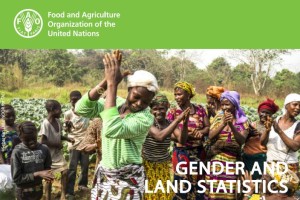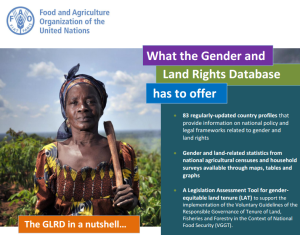 FAO Gender and Land team has recently published a new info-note on the linkages between Gender and Land Statistics.
FAO Gender and Land team has recently published a new info-note on the linkages between Gender and Land Statistics.
Land statistics disaggregated by sex are essential to highlighting the disparities in secure land rights between women and men. With that in mind, in 2014 FAO joined forced with the CGIAR Research Program on Policies, Institutions, and Markets (PIM) to develop a common framework for producing sex-disaggregated indicators for FAO’s Gender and Land Rights Database (GLRD). As a result of this work, five indicators were developed. The new info-note provides an overview of the indicators, methodology behind them, and the key concepts that they capture.
 FAO’s Gender and Land Rights Database (GLRD) launched its new and improved website in 2015 aiming to increase awareness about gender and land issues around the globe. PIM has been proud to be one of the partners of this initiative, especially because the new GLRD’s indicators of men’s and women’s control over land draw from those proposed in the PIM paper by Doss et al (2013), “Gender Inequalities in Ownership and Control of Land in Africa: Myth versus Reality”.
FAO’s Gender and Land Rights Database (GLRD) launched its new and improved website in 2015 aiming to increase awareness about gender and land issues around the globe. PIM has been proud to be one of the partners of this initiative, especially because the new GLRD’s indicators of men’s and women’s control over land draw from those proposed in the PIM paper by Doss et al (2013), “Gender Inequalities in Ownership and Control of Land in Africa: Myth versus Reality”.
Read more on this topic in our earlier blogs:
FAO’s Gender and Land Rights Database launches a new website
How sex-disaggregated land statistics can help monitor progress of the new Sustainable Development Goals (by Ana Paula de la O Campos (FAO))
Related publications:
Ana Paula de la O Campos, Nynne Warring, Chiara Brunelli, Cheryl Doss, and Caitlin Kieran. 2015. Gender and Land Statistics: Recent developments in FAO’s Gender and Land Rights Database. FAO/PIM Technical Note (pdf)



